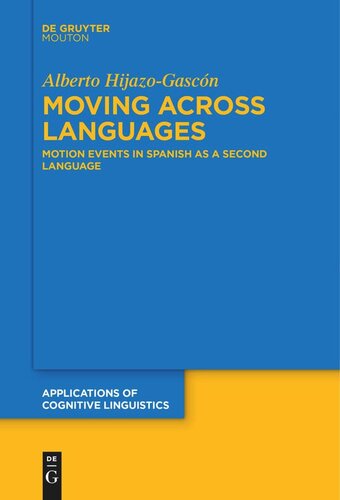

Most ebook files are in PDF format, so you can easily read them using various software such as Foxit Reader or directly on the Google Chrome browser.
Some ebook files are released by publishers in other formats such as .awz, .mobi, .epub, .fb2, etc. You may need to install specific software to read these formats on mobile/PC, such as Calibre.
Please read the tutorial at this link: https://ebookbell.com/faq
We offer FREE conversion to the popular formats you request; however, this may take some time. Therefore, right after payment, please email us, and we will try to provide the service as quickly as possible.
For some exceptional file formats or broken links (if any), please refrain from opening any disputes. Instead, email us first, and we will try to assist within a maximum of 6 hours.
EbookBell Team

5.0
110 reviewsThe book analyzes the complex relationship between languages in the bilingual mind with a focus on motion event typology and the acquisition of Spanish as a second language (L2).
The author starts out by examining L1 patterns which are transferred to less complex L2 systems. The data discussed was elicited by German learners of Spanish. A similar transfer is observed when L1 is typologically and genetically close, as in the case of French and Italian learners of Spanish. Furthermore, the author clarifies the relevance of intra-typological differences within the same linguistic family, including important differences in the lexicalization patterns of Italian with respect to French and Spanish.
The findings contribute to our understanding of the field of motion event typology and thinking-for-speaking. The book demonstrates that conceptual transfer is present in different aspects of the motion lexicalization domain. Interestingly, there are some challenging aspects both for speakers whose first language is typologically different and for those whose language is typologically close. The book offers suggestions on how these challenges in the restructuring of meaning in L2 can be addressed in language teaching. Specifically, pedagogical translation and mediation present promising pathways to the strengthening of semantic competences in the L2.